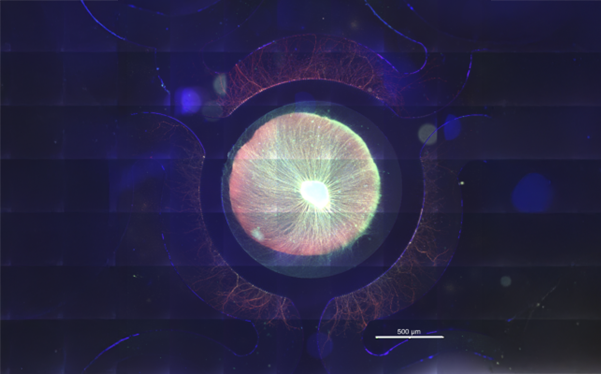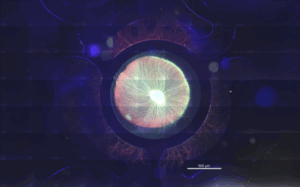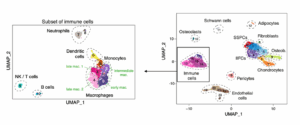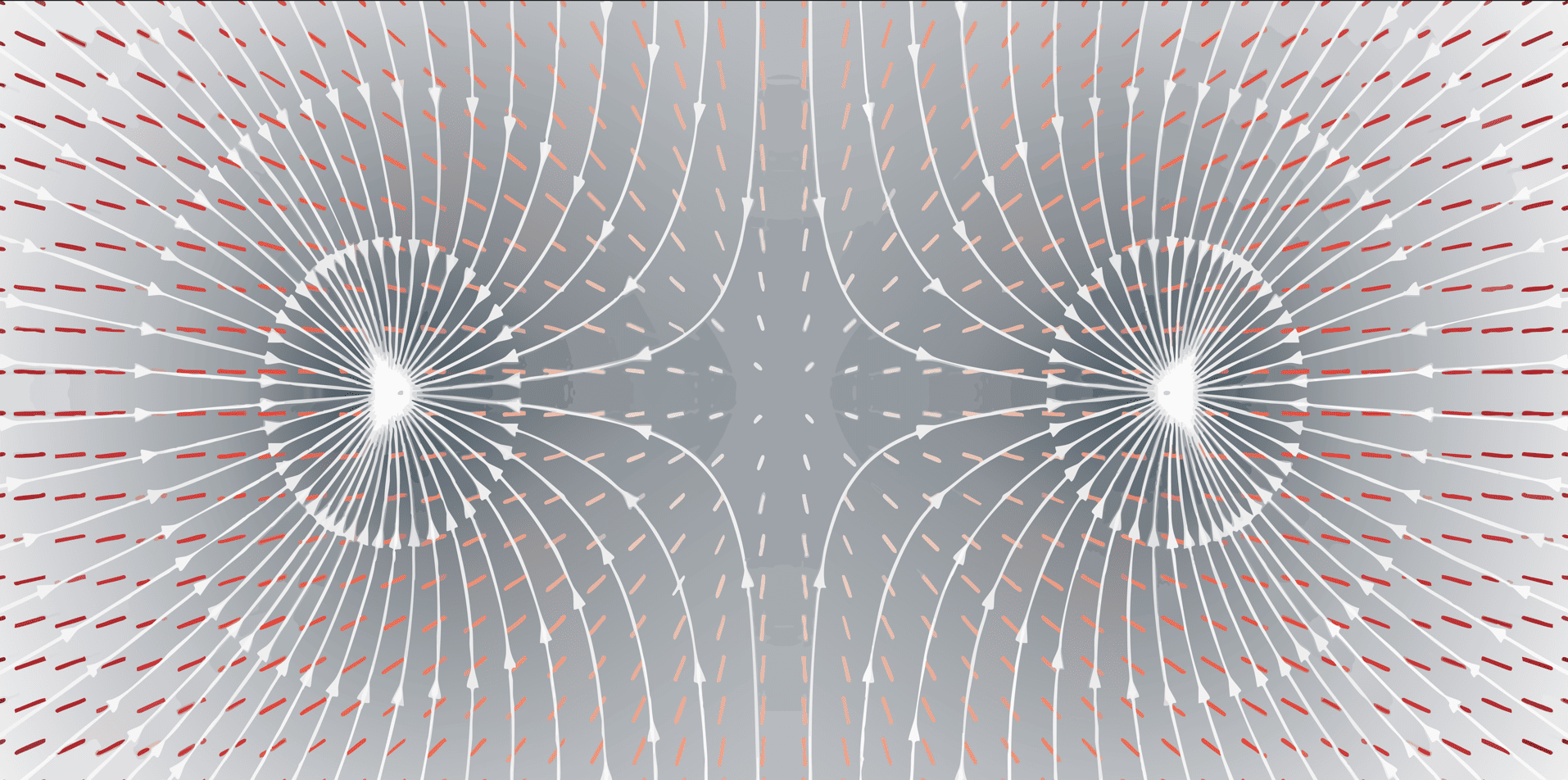From engineering to the clinic: synergies between science and health with the R_SANTÉ Research Quarter (Engineering and Health Research)


The healthcare sector is undergoing profound change. These technological, organizational, and socioeconomic transformations require rigorous, multidisciplinary, and innovation-driven research. Engineers play a key role in this field, whether designing new medical devices, modeling complex physiological functions, or analyzing and exploiting large healthcare databases.
The R_SANTÉ Research Trimester (TR) at Mines Paris – PSL, led by Laurent Corté, lecturer and researcher at the Center for Materials (CMAT), and Yannick Tillier, lecturer and researcher at the Center for Materials Processing (CEMEF), offers engineering students an immersion in this diverse range of issues. Organized around five major themes—bioinformatics and data science, biomaterials and medical devices, biomechanics and modeling, physics and physiology, and health organization and management—it offers a program combining lectures, seminars, visits, bibliography, and research internships in laboratories or hospitals.
The objective is twofold: to enable students to tackle the challenges of health research in a practical way and to introduce them to scientific methods that they can explore in greater depth later on. Depending on their subject, they can learn to collaborate with doctors, researchers, engineers, and decision-makers, understand the role of regulation, economics, and ethics, or follow the steps involved in transferring innovation to the clinic.
This quarter, supervised by an interdisciplinary teaching team, reflects the richness and complexity of contemporary issues in biomedical research. It prepares students to become informed players in healthcare innovation.
Simon Boudara, a second-year engineering student at Mines Paris – PSL, spent several months immersed in the world of biomedical research, exploring a tiny but promising tool: a microfluidic chip called Octopus.
His project, carried out as part of the R_SANTÉ Research Trimester, had a specific objective: to evaluate the performance of this chip designed to better understand how neurons react to their environment, and more specifically how their extensions—axons—interact with nanometer-sized extracellular vesicles (EVs) of biological origin.

Example of axonal growth in the Octopus microfluidic chip. In the center is the dorsal root ganglion (DRG). The axons (in green and red) extend into the central chamber before reaching the microchannels and completing their growth in the peripheral chambers. © Hugo Salmon, Solène Moreau. Manufacturing and imaging: Raul Flores Berdines.
The peripheral nervous system is composed of axons and Schwann cells, which envelop these axons in a protective sheath called myelin, which is essential for the rapid transmission of nerve impulses. Lesions or pathologies affecting these structures can lead to serious neurological disorders. Understanding the interactions between axons, Schwann cells, and extracellular vesicles (lipid nanoparticles secreted by cells) is therefore a crucial challenge for biomedical research.
This is where Octopus comes in, a three-compartment microfluidic chip developed by the Healthfex and NABI laboratories at Paris Cité University. It allows fragments of the nervous system (called spinal ganglion explants) to be isolated in a controlled environment. The axons can then grow from a central compartment into three side chambers, each of which can receive specific treatment. This device paves the way for studies on the effect of different biochemical environments, particularly those containing extracellular vesicles, on neuronal structure and function.
Rather than designing the chip, Simon’s task was to evaluate its physical performance using modeling tools. Using COMSOL Multiphysics software, he conducted a series of 3D simulations, first reproducing fluid flows in the microchannels to verify that the forces exerted on the axons remained below biological safety thresholds. He then studied molecular diffusion to ensure that substances injected into one compartment did not diffuse into others—an essential requirement for reliable compartmentalization.
These numerical analyses were then validated experimentally. The chip, made from FlexDym, a flexible, transparent material marketed by the Paris-based company Eden Tech, was tested by injecting fluorescent solutions. Simon observed the filling of the channels under a microscope and at the macroscopic scale, comparing the results with the model predictions. The discrepancies between simulations and experiments remained small, confirming the reliability of the model and the robustness of the chip for neural culture applications.
Throughout his internship, Simon was supported by Dr. Hugo Salmon, senior lecturer in physics at the Healthfex and NABI laboratories, and his PhD student Raul Flores Berdines. They guided him in implementing the experimental protocols and interpreting the numerical results.
Simon and his partner quickly integrated into the team, discovering the joys and challenges of an interdisciplinary and international research environment. I am quite fond of the Research Quarter format, which provides a meeting ground between engineering and biology and a forum for reflection on the contributions of engineering to our understanding of living organisms.
Dr. Hugo Salmon, Senior Lecturer in Physics at Healthfex and NABI
The results of this internship show that the Octopus chip provides a safe, stable, and controlled environment for studying neurons in the laboratory. Thanks to its compartmentalized design, it allows the effects of specific treatments to be isolated and the complex interactions between axons, myelin, and extracellular vesicles to be studied.
By joining a multidisciplinary team of biologists, doctors, and engineers, Simon discovered how a translational research laboratory works, where engineering tools are used to answer concrete medical questions. This project illustrates the ambition of the Research Trimester: to offer students an authentic research experience connected to today’s major scientific and medical challenges.
First of all, I was attracted by the technical skills involved in this subject. I wanted to use some of the knowledge I had acquired during my studies (concepts of fluid mechanics, diffusion-convection phenomena) in an applied context. It was also an opportunity to discover new concepts such as microfluidics and the finite element method. I was also attracted by the environment of this internship: discovering how physicists and engineers work together with doctors and biologists to develop different research projects.
I didn’t really have any idea about the world of applied research before doing this internship. It allowed me to discover the environment of translational research and to see how the skills I acquired in my engineering program could be put to use in this environment.
The biggest technical challenges were clearly related to the experimental field, which came as a surprise to me. I had expected to face more theoretical scientific challenges related to learning new concepts. In the end, it was the things I initially considered the most accessible that caused me the most difficulty. I had to repeat many experiments several times before they yielded usable results. I was able to overcome these experimental difficulties thanks to my internship supervisors, who were extremely supportive and trained me in several experimental techniques specific to their laboratory.
This chip is part of a strong trend in cell culture today. Its specificity lies in its ability to compartmentalize extracellular vesicles from Schwann cells into different chambers. This facilitates rigorous and quantitative study of the influence of EVs on axonal growth and myelin development. This chip is itself part of the evolution of existing microfluidic platforms in the field of microfluidics. It could pave the way for new engineering devices to study axon-VE interactions.
Trimestre Recherche (TR) internships are not just a scientific immersion for Mines Paris – PSL students: they are part of a long-term research dynamic for the laboratories that host them. Integrated into research work in biology and regenerative medicine, several students have made a concrete contribution to large-scale projects. It was in this context that Blandine Geisler, an engineering student at Mines Paris – PSL, completed an internship in 2023 under the supervision of Céline Colnot, DR2 research director at the National Institute of Health and Medical Research (Inserm). Her internship focused on understanding how the immune response guides the behavior of stem cells in bone and muscle repair after trauma.
During her TR R_SANTÉ, Blandine Geisler focused on how immune system cells, such as macrophages, interact with the stem cells responsible for bone repair, known as skeletal stem/progenitor cells (SSPCs). Macrophages are immune cells that “clean up” tissue after injury, but also play a key role in repair by sending signals to other cells. SSPCs, on the other hand, are cells capable of transforming into bone cells to rebuild damaged bone. Blandine studied these interactions in two situations: a simple bone fracture and a fracture accompanied by muscle damage—a more complex case where regeneration is often disrupted.
To understand exactly what happens at the tissue level, she used a cutting-edge technology called cell-based RNA sequencing (10x Genomics). This technique makes it possible to analyze between 200 and 5,000 genes expressed in cells to determine their type and status. She worked on samples taken at different times after the injury to observe the evolution of cellular dialogue in more than 6,000 cells. This sequencing data requires specific bioinformatics analysis tools. She used tools such as Seurat, which allows similar cells to be grouped together, much like books are classified by genre in a library, thus creating an atlas of bone regeneration. She also used CellChat, which detects chemical messages exchanged between cells using molecules called ligands and receptors. These exchanges are like molecular locks and keys: when a ligand produced by one cell finds its receptor on another, a signal is transmitted. These analyses have provided a better understanding of how macrophages influence stem cell behavior and how this coordination can be altered in complex injuries.
His work has shown that the immune response, which is rapid and intense in the days following an injury, plays a central role in the mobilization of stem cells. This dialogue is essential for proper tissue repair. However, in the case of severe injuries (combined fractures and muscle damage), this coordination is disrupted, which can impair regeneration. These findings open up new avenues for targeting inflammation and optimizing healing processes.

Atlas of immune cells in bone regeneration. © Bone Research 2024.
Blandine Geisler’s internship is part of a long-term project exploring the cellular mechanisms involved in bone regeneration, in which several TR R_SANTÉ students have already participated. Cécile-Aurore Wotawa (TR R_SANTÉ 2021/2022) contributed to this research, which led to a publication in the journal eLife. Blandine’s work has led to a second scientific publication in the journal Bone Research in 2024. This collective work demonstrates the scientific richness of the partnership between Mines Paris – PSL and the regenerative medicine research teams, as well as the real contribution of students to large-scale research projects.
At the end of this research immersion, Blandine Geisler chose to continue in the field of health:
After this internship, I opted for the “Health & Life” option in my thirdyear at the School. Once I graduated, I joined Paris Cité University to begin my medical studies, entering directly into the thirdyear thanks to the Mines-Medicine bridge program.
Blandine Geisler
Her career path perfectly illustrates the bridges that Mines Paris – PSL builds between scientific research, engineering, and medical practice.
This internship allows students to put their expertise in bioinformatics analysis into practice in the context of cutting-edge fundamental research projects. They discover research, scientific methods, and approaches through their active participation in data analysis.
Céline Colnot

At Mines Paris – PSL, training through research is a fundamental pillar of the curriculum. The Research Term (TR) offers engineering students a unique...